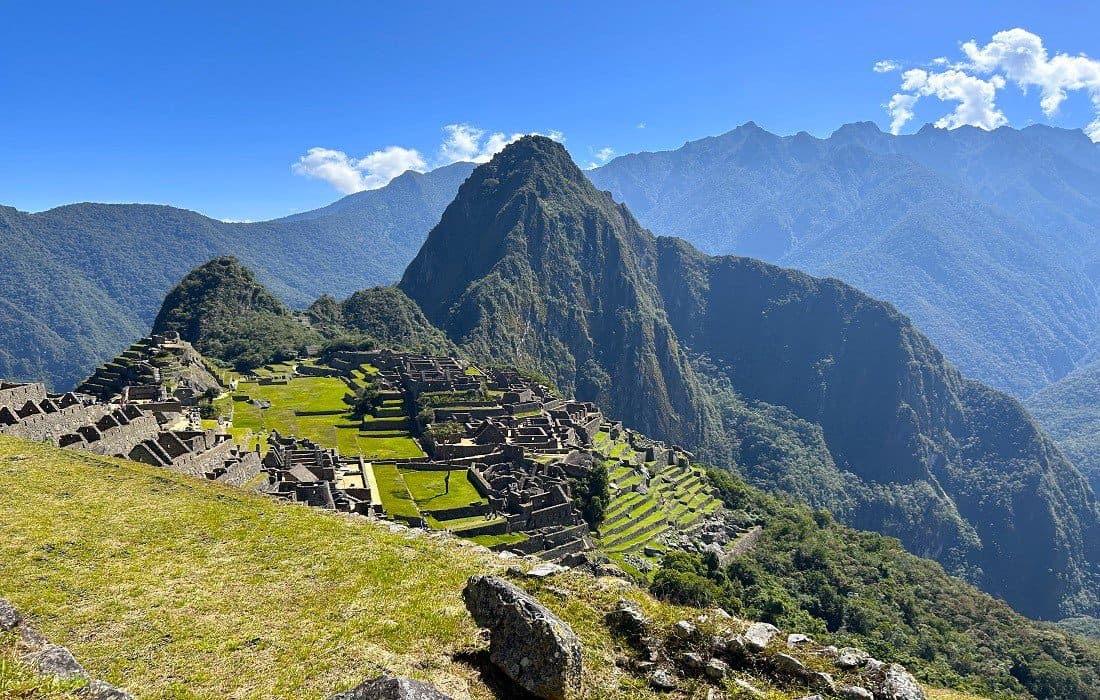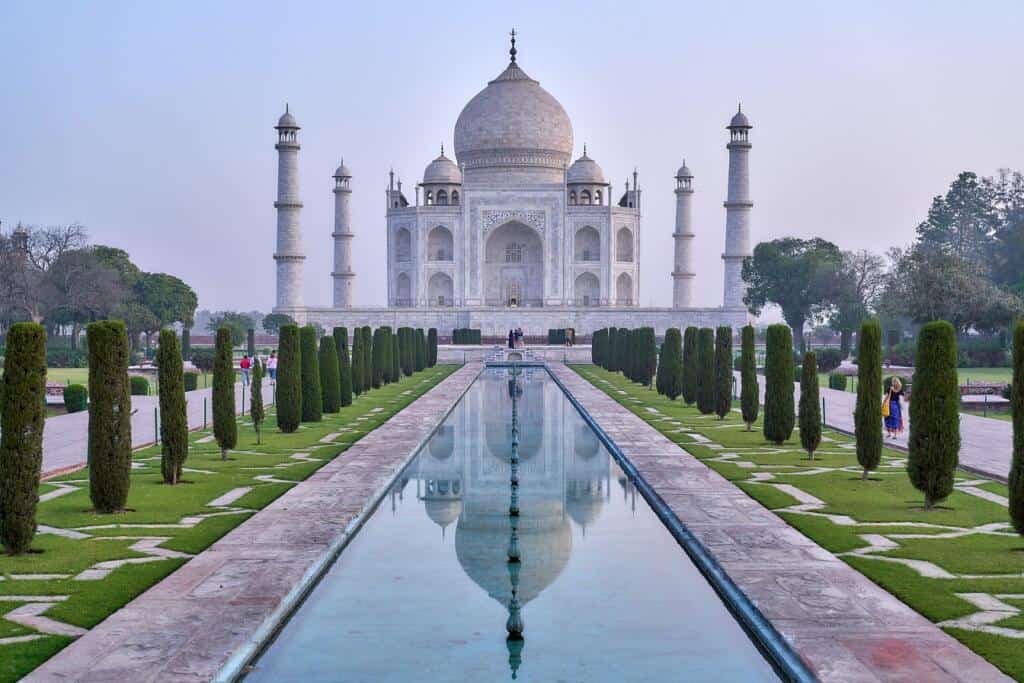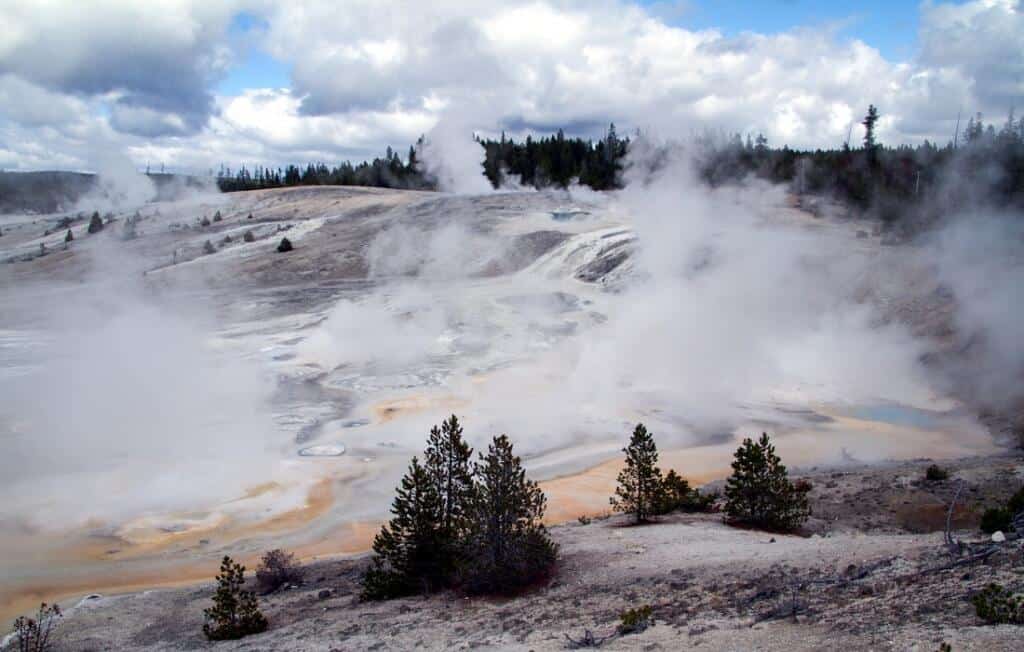UNESCO World Heritage Sites – What Are They?
UNESCO World Heritage Sites are some of the most valuable and culturally significant places on Earth. These sites gain recognition for their outstanding universal value and are legally protected by an international convention administered by the United Nations Educational, Scientific and Cultural Organization (UNESCO).

This post may contain affiliate links. Please read our disclosure and privacy policy for more information.
World Heritage was first introduced in 1972 by adopting the Convention Concerning the Protection of the World Cultural and Natural Heritage. The goal of this convention was to encourage the identification, protection, and preservation of cultural and natural heritage sites worldwide. Since then, over 1,100 sites in more than 160 countries have been designated as World Heritage Sites.
To be on the World Heritage List, a site must meet at least one of ten criteria related to cultural or natural significance. These criteria include representing a masterpiece of human creative genius, exhibiting an important interchange of human values, or containing exceptional natural beauty. Once a site is designated as a World Heritage Site, it is the responsibility of the international community to protect and preserve it for future generations.
What is UNESCO?
UNESCO stands for the United Nations Educational, Scientific and Cultural Organization. It is a specialized agency of the United Nations created in 1945. It promotes peace and security through international cooperation in education, science, and culture. UNESCO is headquartered in Paris, France, and has 193 member states.
One of the significant programs of UNESCO is the World Heritage Program. This program aims to identify, protect, and preserve cultural and natural heritage sites worldwide that are of outstanding universal value to humanity. The World Heritage List currently includes over 1,100 sites in more than 160 countries.
To be included on the World Heritage List, a site must meet specific criteria. It must be of outstanding universal value and meet at least one of ten selection criteria, which include criteria related to cultural significance, natural beauty, and geological importance. Once a site is inscribed on the World Heritage List, it is protected by international treaties and agreements, and efforts are made to ensure that it is preserved for future generations.
Machu Picchu, Peru a UNESCO World Heritage Site:

UNESCO also works to promote education, including adult education and literacy, and to support scientific research and innovation. The organization is committed to promoting cultural diversity and intercultural dialogue and protecting and promoting the world’s cultural heritage. Through its various programs and initiatives, UNESCO seeks to promote peace, sustainable development, and the well-being of all people.
The Concept of World Heritage
World Heritage is a concept developed by the United Nations Educational, Scientific and Cultural Organization (UNESCO) to identify and protect places on Earth that are of outstanding universal value to humanity. These places, both natural and cultural, are considered to be essential to the collective heritage of humanity and are inscribed on the World Heritage List.
The World Heritage List was established in 1972 and currently includes over 1,100 sites in more than 170 countries. These sites are chosen based on their exceptional cultural or natural significance, as well as their ability to provide insight into the development of human civilization.
The Great Wall Of China, a UNESCO World Heritage Site:

The designation of a site as World Heritage brings a responsibility to protect and preserve it for future generations. This includes ensuring the site is not damaged or destroyed by human activity, climate change, or other threats.
The concept of World Heritage is an essential tool for promoting cultural understanding and environmental conservation worldwide. By recognizing and protecting these exceptional places, UNESCO aims to ensure that they remain accessible to future generations and continue to inspire awe and wonder in people of all ages and backgrounds.
The 10 Selection Criteria for UNESCO World Heritage Sites
- Represent a masterpiece of human creative genius.
- Exhibit an important interchange of human values, over time or within a cultural area of the world, on developments in architecture or technology, monumental arts, town planning, or landscape design.
- Bear a unique or at least exceptional testimony to a cultural tradition or to a civilization that is living or which has disappeared.
- Be an outstanding example of a type of building, architectural or technological ensemble, or landscape that illustrates significant stages in human history.
- Be an outstanding example of a traditional human settlement, land use, or sea use that is representative of a culture (or cultures) or human interaction with the environment, especially when it has become vulnerable to the impact of irreversible change.
- To be directly or tangibly associated with events or living traditions, ideas, or beliefs, with artistic and literary works of outstanding universal significance.
- To contain superlative natural phenomena or areas of exceptional natural beauty and aesthetic importance.
- To be outstanding examples representing major stages of earth’s history, including the record of life, significant ongoing geological processes in the development of landforms, or significant geomorphic or physiographic features.
- To be outstanding examples representing significant ongoing ecological and biological processes in the evolution and development of terrestrial, freshwater, coastal, and marine ecosystems and communities of plants and animals.
- To contain the most significant natural habitats for in-situ conservation of biological diversity, including those containing threatened species of outstanding universal value from the point of view of science or conservation.
Taj Mahal, India, a UNESCO World Heritage Site:

The criteria are not mutually exclusive, and a site may meet multiple criteria. However, meeting one criterion does not guarantee inclusion on the list, as the site must also be of outstanding universal value.
Types of World Heritage Sites
There are three types of World Heritage Sites: Cultural Heritage Sites, Natural Heritage Sites, and Mixed Heritage Sites.
Cultural Heritage Sites
Cultural Heritage Sites are those that represent the cultural and social development of a region. These sites include historic buildings, monuments, archaeological sites, and urban centers. They also have intangible cultural heritage, such as music, dance, and language. Examples of Cultural Heritage Sites include the Great Wall of China, the Taj Mahal, and the historic center of Rome.
Natural Heritage Sites
Natural Heritage Sites are those that represent the natural beauty and diversity of a region. These sites include national parks, wildlife reserves, and geological formations. They also have habitats for endangered species and areas of exceptional natural beauty. Natural Heritage Sites include the Great Barrier Reef, Yellowstone National Park, and the Serengeti National Park.
Yellowstone National Park, America, a UNESCO World Heritage Site:

Mixed Heritage Sites
Mixed Heritage Sites are those that have both cultural and natural significance. These sites include landscapes shaped by human activity, such as terraced farming or traditional land-use practices. They also include sites with natural and cultural significance, such as sacred natural sites or cultural landscapes. Examples of Mixed Heritage Sites include Machu Picchu, the Galapagos Islands, and the Wadi Rum Protected Area.
The World Heritage List
The UNESCO World Heritage Centre maintains the list. As of November 2023, 1,155 sites are on the World Heritage List. These sites are located in 167 countries and territories around the world. The list includes cultural and natural sites, such as historic cities, archaeological sites, national parks, and natural wonders.
The World Heritage List is a vital tool for preserving and protecting the world’s most valuable cultural and natural treasures. It helps to raise awareness of the importance of these sites and encourages countries to work together to safeguard them for future generations.
Preservation and Conservation Efforts
UNESCO’s World Heritage program is committed to preserving and conserving cultural and natural heritage sites worldwide. The organization works to protect these sites from threats such as pollution, climate change, and urbanization, among others.
In addition to its World Heritage List, UNESCO also works to preserve and conserve intangible cultural heritage, such as traditional dances, music, and crafts. The organization recognizes that these cultural practices are often threatened by globalization and modernization and works to promote their continued existence.
UNESCO also recognizes the importance of preserving natural heritage sites and works to protect biodiversity and ecosystems. This includes efforts to protect endangered species, prevent deforestation, and promote sustainable agriculture.
Galapagos Giant Tortoise, an endangered species:

UNESCO’s preservation and conservation efforts ensure that the world’s cultural and natural heritage sites thrive for future generations.
Challenges and Threats to World Heritage Sites
World Heritage Sites are not immune to challenges and threats that can put their outstanding universal value at risk. These challenges can come from both natural and human-made causes. Here are some of the challenges and threats that World Heritage Sites face:
Natural Disasters
Natural disasters such as earthquakes, floods, and wildfires can cause significant damage to World Heritage Sites. For example, in 2019, a fire broke out in the Notre Dame Cathedral in Paris, causing significant damage. Natural disasters can also lead to erosion, landslides, and other damage that can affect the integrity of a site.
Climate Change
Climate change is a significant threat to World Heritage Sites. Rising sea levels, increased temperatures, and extreme weather events can all cause damage to sites. For example, the Great Barrier Reef in Australia. The reef is at risk due to the impacts of climate change, including coral bleaching and ocean acidification.
The Great Barrier Reef in Australia, a UNESCO World Heritage Site:

Human Activities
Human activities such as urbanization, tourism, and resource extraction can also threaten World Heritage Sites. For example, constructing new buildings near historic sites can impact their visual integrity. Unregulated tourism can lead to overcrowding and damage to fragile ecosystems. Resource extraction, such as mining and oil drilling, can also cause significant damage to sites.
Stonehenge Example
In 2021, UNESCO warned that Stonehenge could be stripped of its World Heritage site status. UNESCO’s concern was that a road tunnel, backed by the government, would irreversibly damage an area of “outstanding universal value”.
UNESCO has issued a second warning, and litigation continues as the developers and the government continue to find a way to construct the tunnel.
Armed Conflict
Armed conflict is another significant threat to World Heritage Sites. During the war, sites can be damaged or destroyed intentionally or unintentionally. For example, the ancient city of Aleppo in Syria has suffered significant damage due to the ongoing conflict in the region.
Protecting World Heritage Sites from these challenges and threats requires a coordinated effort from governments, international organizations, and local communities. By working together, it is possible to ensure that these sites remain preserved for future generations.
FAQs
Why are World Heritage sites important?
World Heritage sites are considered of outstanding universal value and are recognized as important cultural and natural sites. They belong to all of humanity. They represent the diversity of our planet’s natural and cultural heritage. As such, they are as a source of pride and identity for communities worldwide.
How does UNESCO protect World Heritage sites?
UNESCO works with governments and local communities to identify, protect, and conserve World Heritage sites. The organization provides technical assistance, training, and financial support to help countries manage their heritage sites and ensure their preservation for future generations.
What is the meaning of UNESCO World Heritage?
UNESCO World Heritage is a designation given to sites that are considered to be of outstanding universal value and are recognized as important cultural and natural sites that belong to all of humanity. The designation is awarded by the United Nations Educational, Scientific and Cultural Organization (UNESCO).
How many UNESCO World Heritage Sites are in the US?
As of 2023, there are 25 UNESCO World Heritage Sites in the United States. These include natural sites such as Yellowstone National Park and cultural sites such as Independence Hall in Philadelphia.
Why is a UNESCO Heritage Site important?
UNESCO Heritage Sites are essential because they represent the diversity of our planet’s natural and cultural heritage and are recognized as a source of pride and identity for communities worldwide. They are also crucial for contributing to sustainable development. They provide economic and social benefits to local communities and promote tourism and cultural exchange.
Key Takeaways
- UNESCO World Heritage Sites are legally protected landmarks recognized for their outstanding universal value.
- World Heritage was introduced in 1972 to encourage the identification, protection, and preservation of cultural and natural heritage sites worldwide.
- To be included on the World Heritage List, a site must meet at least one of ten criteria related to cultural or natural significance.
Closing Thoughts
Being a UNESCO World Heritage Site has numerous benefits, including increased tourism, greater recognition, and protection for future generations. However, there are also challenges in preserving and maintaining these sites, especially in the face of natural disasters, climate change, and human activities.
It is crucial to recognize the importance of preserving these sites for future generations and to continue efforts to protect them. The UNESCO World Heritage List serves as a reminder of the incredible cultural and natural diversity of our planet. Most importantly, the need to safeguard it for the benefit of all.
How many UNESCO World Heritage Sites have you visited? Comment below:
Looking for more, start here:
- The 10 Most Famous UNESCO World Heritage Sites
- Castle Howard – Yorkshires Brideshead Revisited
- Chatsworth House – England
- Harewood House – England
- Harrogate’s Victorian Turkish Baths
- Stonehenge – How To Visit For Free – With Maps!
- Temple Newsam – Leeds, England
- UTO Vacations – What To Expect – An Honest Review
- Why Visit Lotherton Hall?
- York – The Heart Of The Viking Territory
We participate in the Amazon Services LLC Associates Program, an affiliate advertising program designed to provide a means for us to earn fees by linking to Amazon.com and affiliated sites.
Brit On The Move™ Travel Resources
Ready to book your next trip? Use these resources that work:
Was the flight canceled or delayed? Find out if you are eligible for compensation with AirHelp.
- Book your Hotel: Find the best prices; use Booking.com
- Find Apartment Rentals: You will find the best prices on apartment rentals with Booking.com’s Apartment Finder.
- Travel Insurance: Don’t leave home without it. View our suggestions to help you decide which travel insurance is for you: Travel Insurance Guide.
- Want to earn tons of points and make your next trip accessible? Check out our recommendations for Travel Credit Cards.
- Want To Take A Volunteer Vacation or a Working Holiday? Check out the complete guide to how here!
- Want to Shop For Travel Accessories? Check out our Travel Shop.
Need more help planning your trip? Visit our Resources Page, which highlights the great companies we use for traveling.
